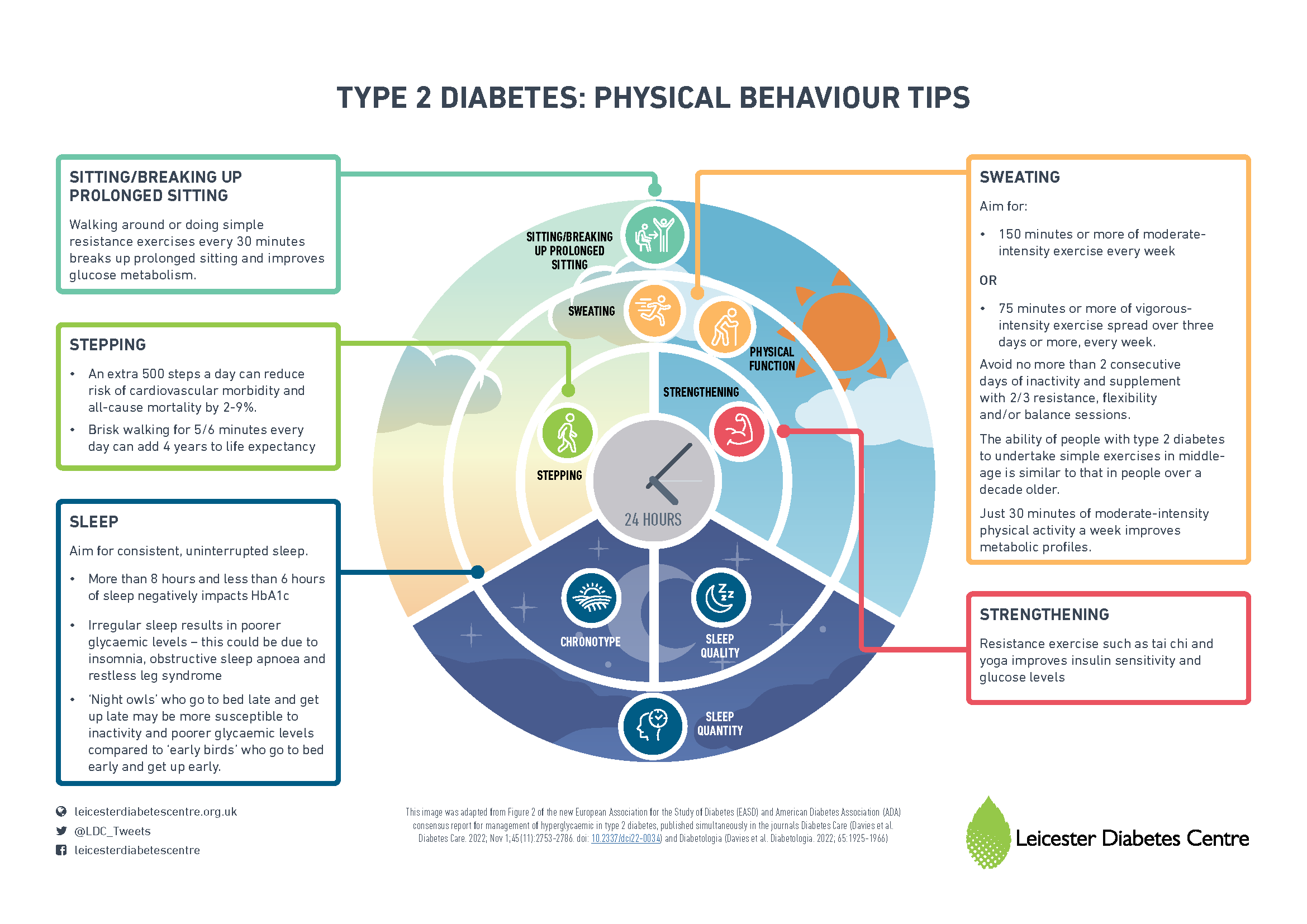Leicester Diabetes Centre creates an ‘informative’ infographic
World-renowned Leicester health centre has highlighted five important health behaviours people with diabetes should be aware of to help them better manage their condition
Leicester Diabetes Centre (LDC) has created an educational infographic which featured in the new European Association for the Study of Diabetes (EASD) and the American Diabetes Association (ADA) consensus report. This report was published simultaneously in the journals Diabetes Care and Diabetologia , and is being used by clinicians around the globe to support people with diabetes.
This new infographic explores the impact of physical behaviours on the health of people living with the condition and focuses on the five S’s – sitting, stepping, sweating, strengthening and sleep.
The infographic was developed by Professor Melanie Davies CBE, co-founder of the LDC, based at Leicester General Hospital, as well as Mike Bonar, Creative Director, Charlie Franklin, Senior Creative, Dr Joseph Henson, Research Associate and Professor Tom Yates.
Professor Davies CBE said: “We should all be aware of how important the whole day is when talking about our activity levels and our health.
“We know that regular exercise is very important for people living with type 2 diabetes. However, other behaviours that happen over the course of a day are vital too.”
She added: “Over 24-hours, we spend time sitting, sleeping, walking and exercising. All of these activities affect our health.”
According to the new guidelines, prolonged sitting should be broken up by walking around or doing simple resistance exercises every 30 minutes to improve glucose metabolism.
The experts say an extra 500 steps a day can reduce the risk of heart problems and early death by two to nine per cent, while brisk walking for five to six minutes every day can add four years to life expectancy.
People living with diabetes should also aim to exercise (sweating) for either 150 minutes or more of moderate-intensity exercise or 75 minutes or more of vigorous-intensity exercise, every week. People are urged to avoid no more than two consecutive days of inactivity and to also include two to three strength, flexibility and, or, balance sessions. This can include activities such as tai chi and yoga.
People should aim for consistent, uninterrupted sleep. Irregular sleep results in poorer glycaemic levels – this could be due to insomnia, obstructive sleep apnoea and restless leg syndrome. Night owls who go to bed late and get up late may be more susceptible to inactivity and poorer glycaemic levels compared to ‘early birds’ who go to bed early and get up early, the scientists say.
Th infographic image was adapted from Figure 2 of the new European Association for the Study of Diabetes (EASD) and American Diabetes Association (ADA) consensus report for management of hyperglycaemic in type 2 diabetes, published simultaneously in the journals Diabetes Care (Davies et al. Diabetes Care. 2022; Nov 1;45(11):2753-2786. doi: 10.2337/dci22-0034) and Diabetologia (Davies et al. Diabetologia. 2022; 65:1925-1966).
To access the infographic, click here.

